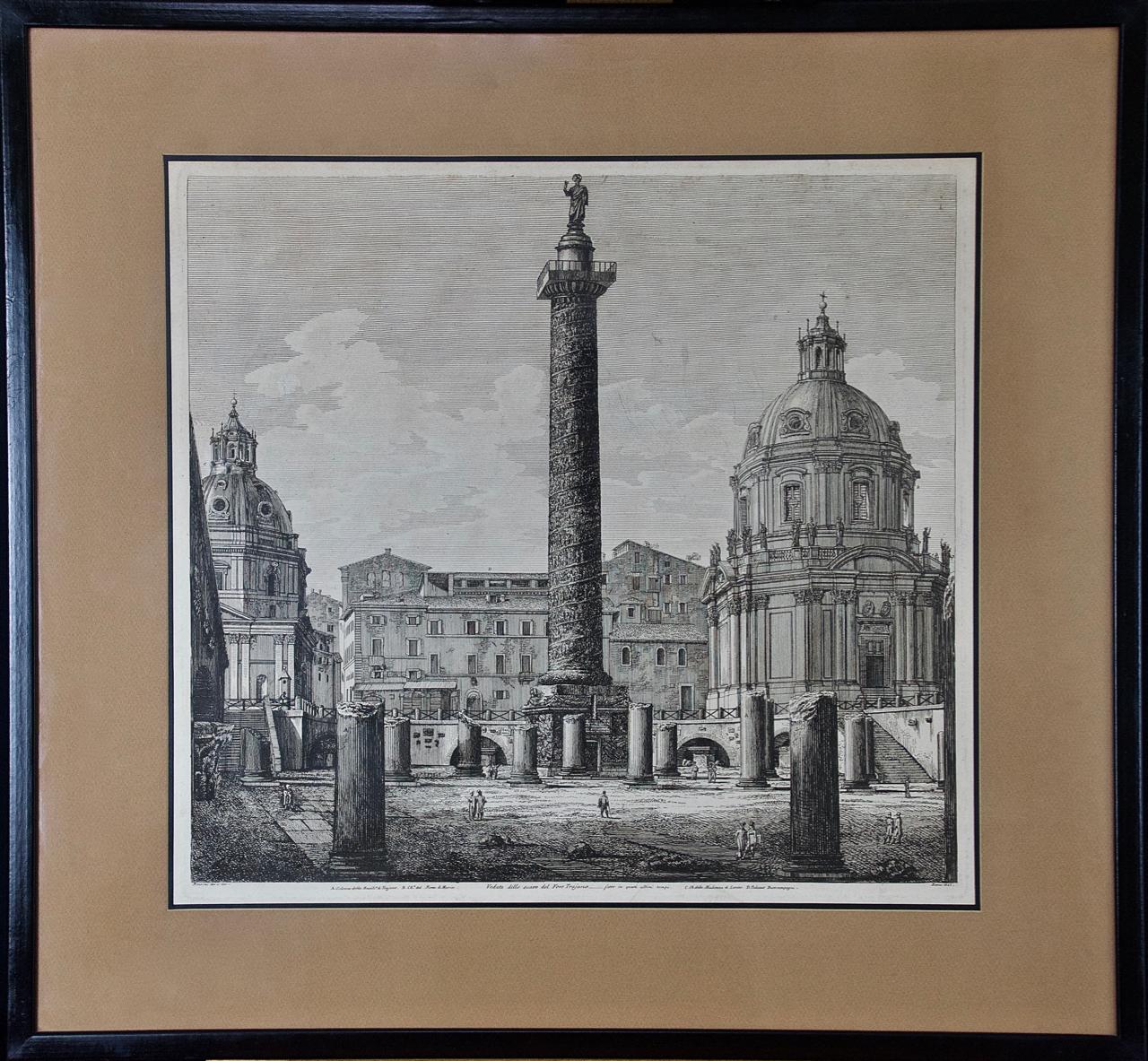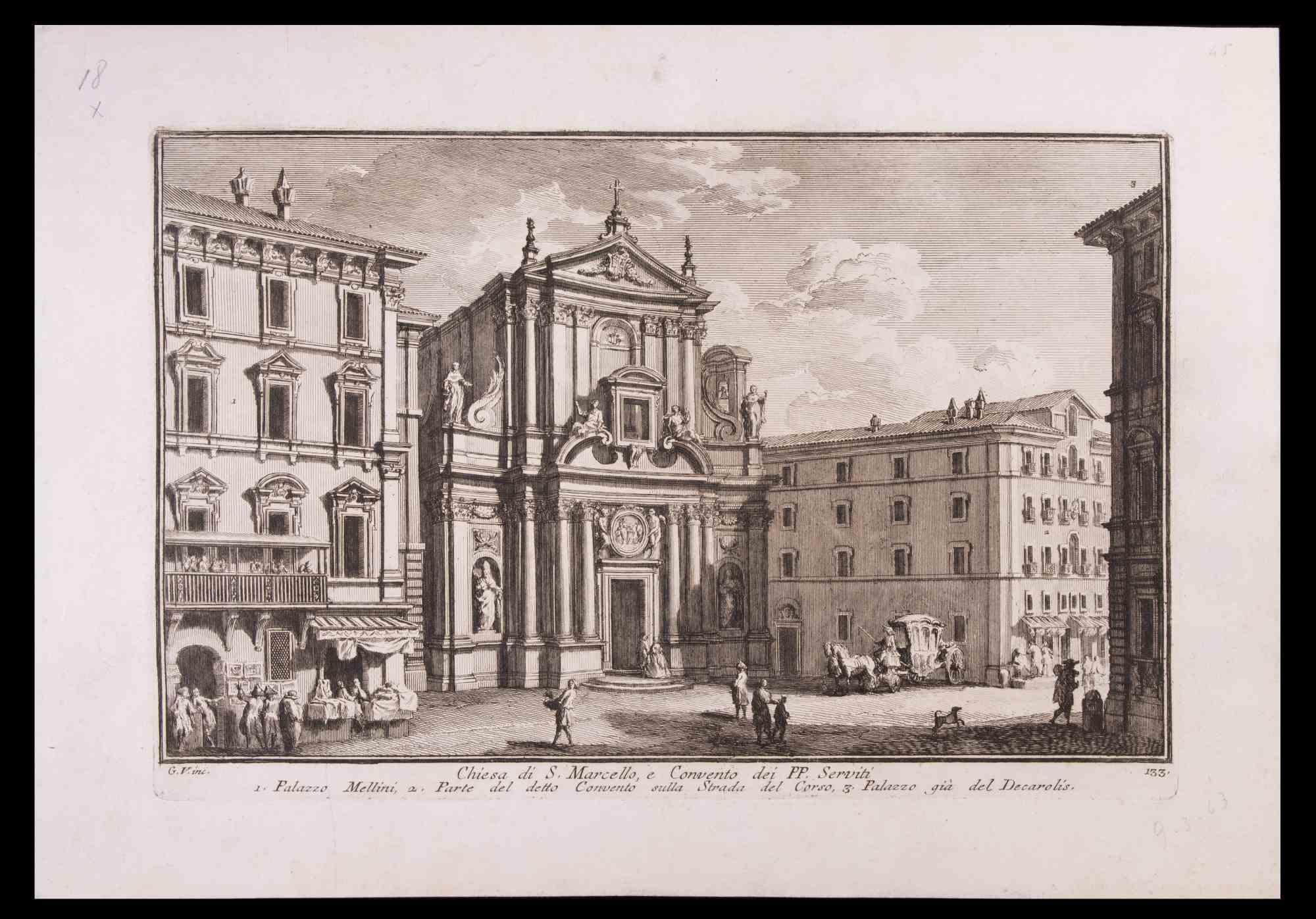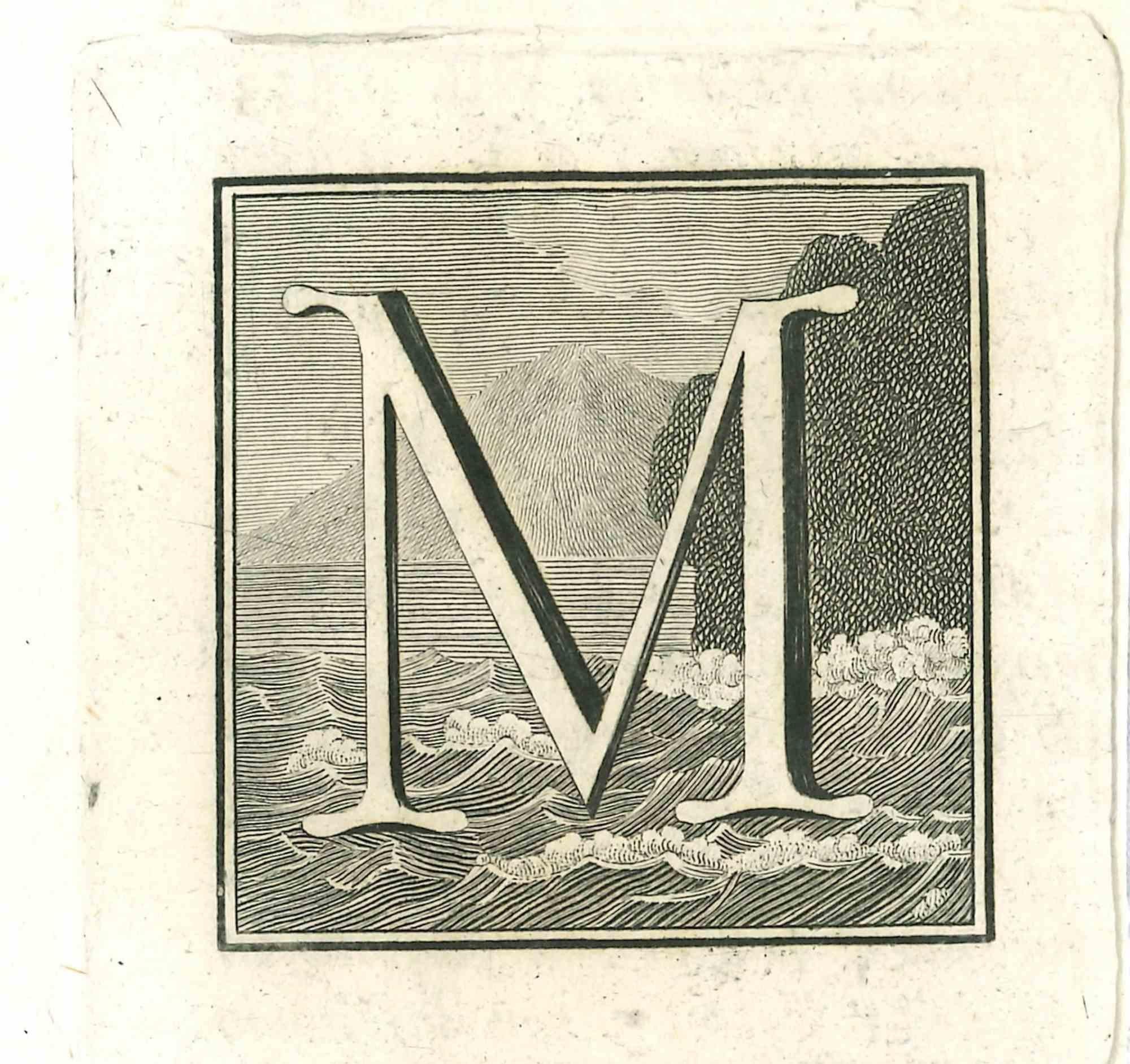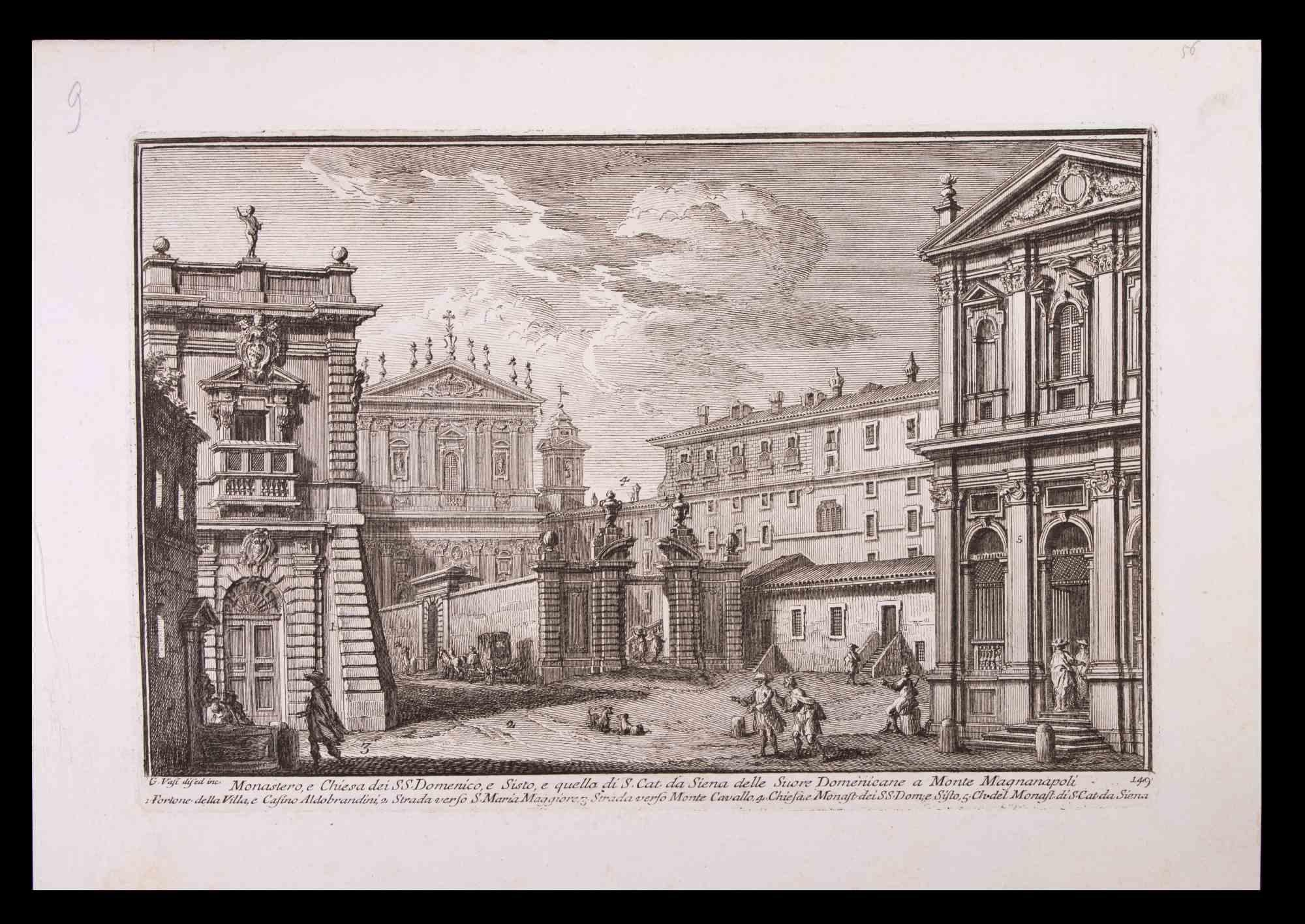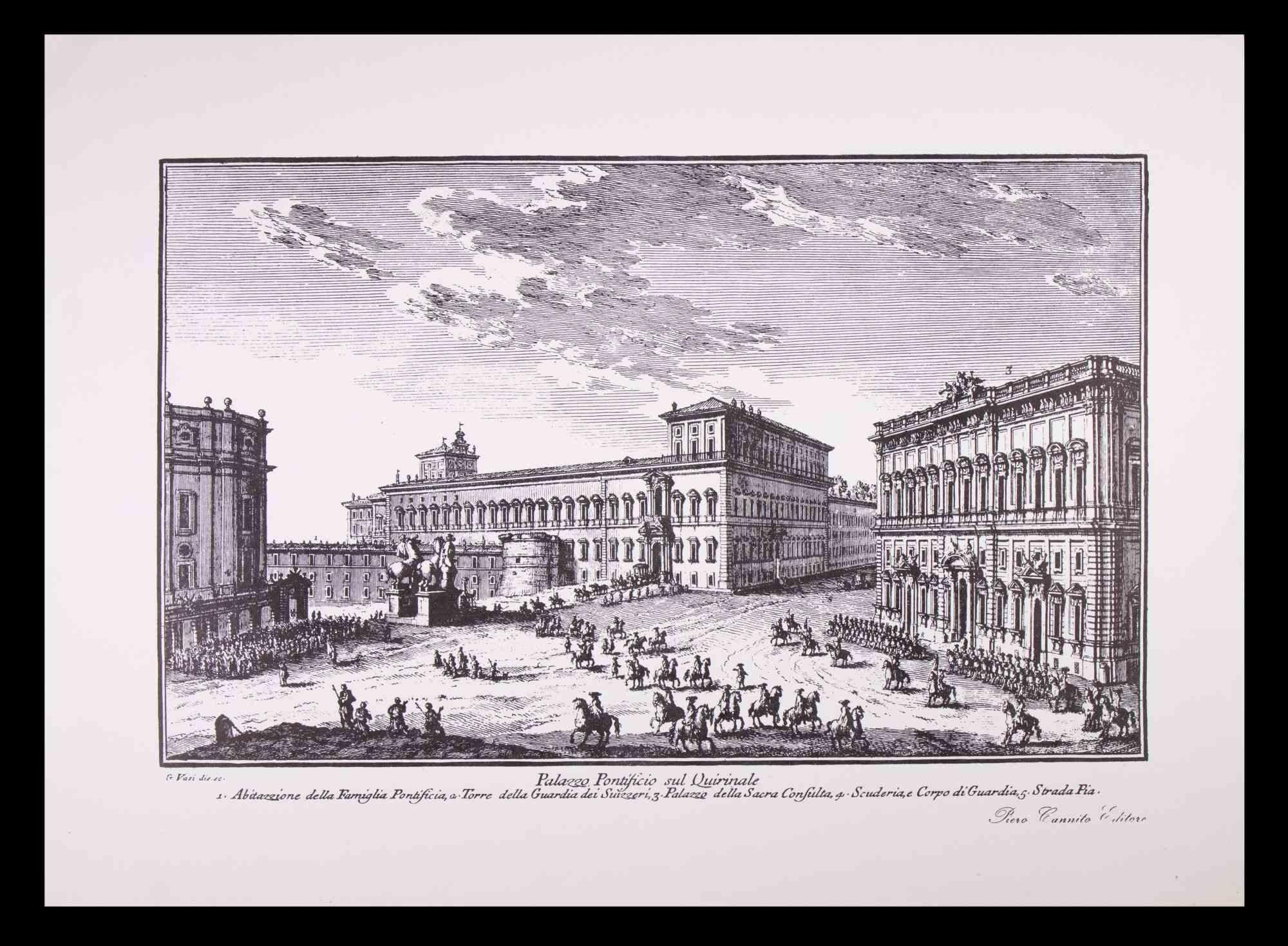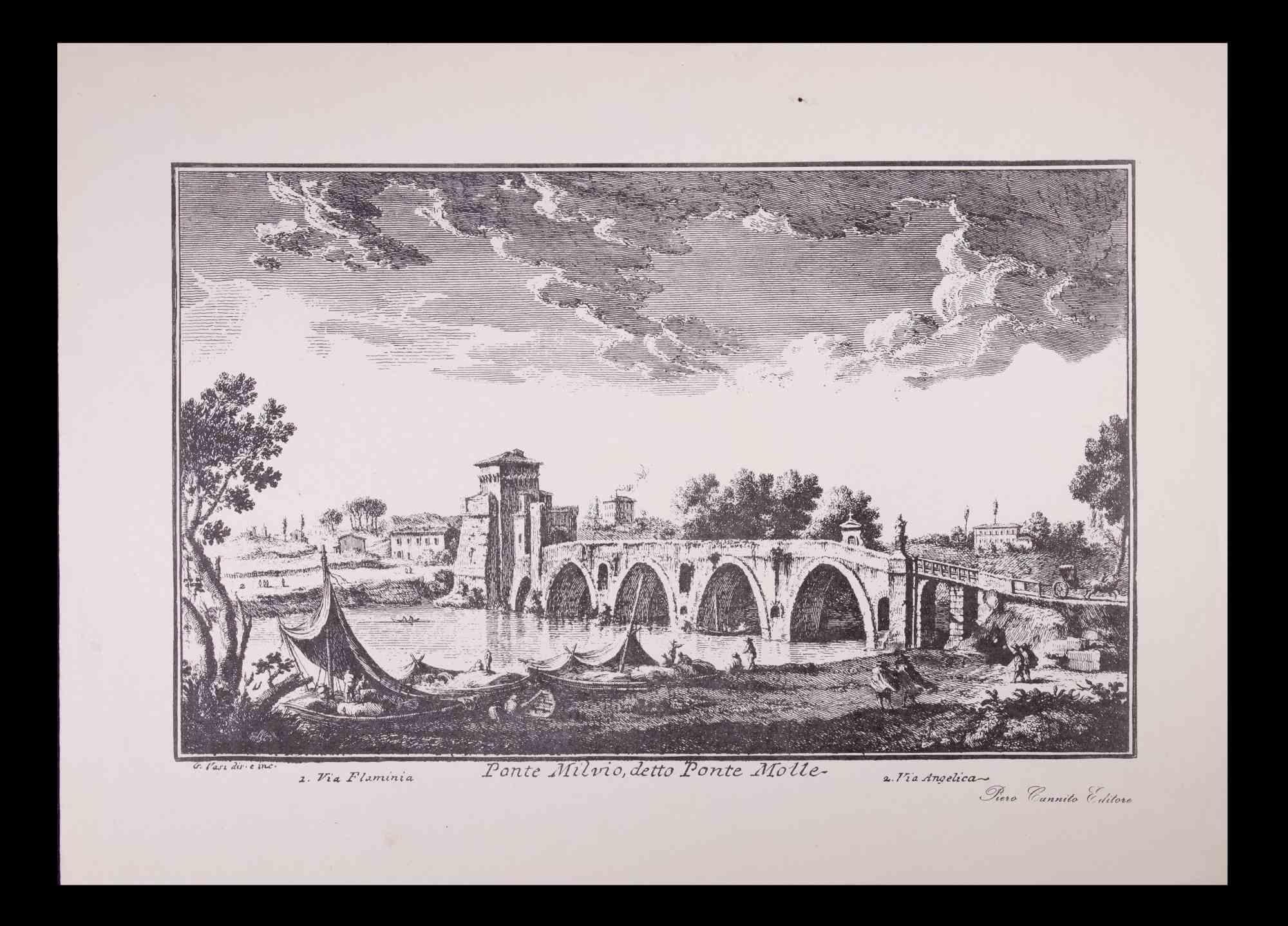Items Similar to Amore Scherza - Original Etching by G. B. da Ravenna after Bernardino Nocchi
Want more images or videos?
Request additional images or videos from the seller
1 of 5
Giovanni Brunetti da RavennaAmore Scherza - Original Etching by G. B. da Ravenna after Bernardino Nocchi1821
1821
About the Item
“Amore che scherzo, Statua” (Joking Eros, Statue) is a wonderful black and white etching on paper, realized by the artist Giovanni Brunetti da Ravenna, after Bernardino Nocchi as the inscriptions on plates on lower margins report “Bernardino Nocchi delineò/ Gio Brunetti da Ravenna inc. Roma 1795”.
This original print is numbered on plate in Roman numerals on higher right corner “Tav. XXIX” and is a plate from the series "Illustrazioni de'Monumenti scelti Borghesiani già esistenti nella Villa sul Pincio (..)date ora per la prima volta in luce dal cav. Gio. Gherardo De Rossi e da Stefano Piale sotto la guida di Vincenzo Feoli", by Ennio Quirino Visconti, published by Stamperia de Romanis in Rome, 1821.
This old master’s original prints representing a precious piece of the Borghese collection, an Eros statue caressing a sparrow, is in excellent conditions with some light signs of the time (some little whormholes on the left margin beyond the marginal line of the matrix) but with fresh impression.
Illustrazioni de'Monumenti scelti Borghesiani
This collection in two volumes is a beautifully detailed catalog of classical sculptures collected by Prince Borghese (1730-1800) in his Villa on the Pincio. Ennio Quirino Visconti (1751 - 1818) wrote the texts that accompany the large branches depicting. To these writings, which were found and made available by the son of the illustrious archaeologist, the publishers added only a few illustrations relating to some minor monument of which copper had already been engraved.
The engraved title-plate are signed by draughtsmen like Agostino Tofanelli, Stefano Tofanelli, Bernardino Nocchi, Domenico de Angelis or Teodoro Matteini, and by engravers Pietro Fontana Veneto, P. Vitali, Pietro Bettelini, Giovanni Folo Veneto, Giovanni Brunetti da Ravenna, Giovanni Ottaviani, Francesco Cecchini, Gio. Batta. Leonetti, Girolamo Carattoni, Domenico Cunego, Luigi Cunego, Alessandro Mochetti, Luigi Pizzi, Angelo Campanella or Giacomo Bossi.
The Volume I shows ancient full-length statues, of the Borghese warrior by Agasias (two plates), Greek gods and heroes and Roman famous historical figures; the last two plates represents antique Egyptian deities. There are plates representing ancient bas-reliefs, sarcophagi, of mythological subjects, the Borghese Vase, portrait busts, a vase on an altar, two statues of Amor; and two modern statues, by Bernini (the Apollo and Daphne, and the David). Special attention is held for the “Borghese Warriors”.
«Très bel ouvrage» writes Brunet, «Grand ouvrage, le seul qui mérite, parmi ceux sur la villa Borgese, de figurer dans le chapitre aux Galeries et Collections» Vinet said, looking at this plate.
Agostino Tofanelli (Lucca 1770 - Rome 1834)
Son of the engraver Andrea, Agostino Tofanelli studied with his father and his brother Stefano. In 1781 he settled in Rome to attend the courses of the Accademia del Nudo. Until the early years of the century, he was a popular draftsman and engraver; in 1807 he was appointed custodian of the Capitoline Museum, a position he held until his death. The first important assignments as a painter was in Rome in Palazzo Spada (1808) and in the renovation of the apartments of the Quirinale (Salon de Musique of the Empress, 1812). In 1813 he was appointed member of the Accademia di San Luca to follow the interventions in Palazzo Taverna (1810-1814), in the Palazzi Vaticani (1817-1818) and in the chapel of the Quirinale. In Lucca, he was also commissioned by Maria Luisa di Borbone (1818-1820), for family portraits and works of biblical theme.
Bernardino Nocchi (Lucca, 1741 - Rome, 1812)
Bernardino Nocchi moved to Rome in 1769 with his colleague Stefano Tofanelli, entering the school of Niccolò Lapiccola where he developed a baroque style with neoclassical suggestions.
Bernardino Nocchi was noticed by Pope Pius VI, who in 1780 entrusted him with the painting of the Sacred Apostolic Palaces and then in 1785 with the Print Room of the Vatican Library. But he also works outside the capital, in Gubbio where in 1797 he realizes the transit of St. Joseph in the Church of San Secondo, in Spoleto, in Lucca and in Catania. Returning to Rome, Nocchi painted some of his best paintings: Prince Camillo Borghese in 1799 , The apotheosis of Saint Prudenziana, Saint Novato and Saint Timothy in 1803 and Pius VII in 1807.
This artwork is shipped from Italy. Under existing legislation, any artwork in Italy created over 70 years ago by an artist who has died requires a licence for export regardless of the work’s market price. The shipping may require additional handling days to require the licence according to the final destination of the artwork.
- Creator:Giovanni Brunetti da Ravenna (1786, Italian)
- Creation Year:1821
- Dimensions:Height: 23.23 in (59 cm)Width: 17.33 in (44 cm)Depth: 0.04 in (1 mm)
- Medium:
- Movement & Style:
- Period:
- Condition:Insurance may be requested by customers as additional service, contact us for more information.
- Gallery Location:Roma, IT
- Reference Number:
About the Seller
4.9
Platinum Seller
These expertly vetted sellers are 1stDibs' most experienced sellers and are rated highest by our customers.
1stDibs seller since 2017
6,687 sales on 1stDibs
Typical response time: 2 hours
- ShippingRetrieving quote...Ships From: Rome, Italy
- Return PolicyA return for this item may be initiated within 14 days of delivery.
More From This SellerView All
- Chiesa di S. Marcello - Etching by Giuseppe Vasi - Late 18th CenturyBy Giuseppe VasiLocated in Roma, ITChiesa di S. Marcello is a black and white etching of the Late 18th century realized by Giuseppe Vasi. Signed and titled on plate lower margin. Good conditions and aged margins wi...Category
Late 18th Century Old Masters Figurative Prints
MaterialsEtching
- Capital letter M from the Antiquities of Herculaneum - Etching - 18th CenturyLocated in Roma, ITCapital letter for the Antiquities of Herculaneum Exposed, original etching from the end of the 18th century, made by Various Old Masters. In very good condition, except for some st...Category
Late 18th Century Old Masters Figurative Prints
MaterialsEtching
- Monastero e Chiesa dei SS. Domenico - Etching by G. Vasi - Late 18th CenturyBy Giuseppe VasiLocated in Roma, ITMonastero e Chiesa dei SS. Domenico is an original black and white etching of the Late 18th century realized by Giuseppe Vasi. The beautiful etching represents a glimpse of Rome. ...Category
Late 18th Century Old Masters Figurative Prints
MaterialsEtching
- Palazzo Pontificio - Etching by Giuseppe Vasi - Late 18th CenturyBy Giuseppe VasiLocated in Roma, ITPalazzo Pontificio is an original black and white etching of the Late 18th Century realized by Giuseppe Vasi. The beautiful etching represents a glimpse of Rome. Signed and titled ...Category
Late 18th Century Old Masters Figurative Prints
MaterialsEtching
- Ponte Milvio - Etching by Giuseppe Vasi - Late 18th CenturyBy Giuseppe VasiLocated in Roma, ITPonte Milvio is an original black and white etching of the Late 18th century realized by Giuseppe Vasi. The beautiful etching represents a glimpse of Rom...Category
Late 18th Century Old Masters Figurative Prints
MaterialsEtching
- Sedale e Chiesa di S. Spirito - Etching by Giuseppe Vasi - Late 18th CenturyBy Giuseppe VasiLocated in Roma, ITSedale e Chiesa di S. Spirito is an original black and white etching of the Late 18th century realized by Giuseppe Vasi. The beautiful etching represents a glimpse of Rome. Signed...Category
Late 18th Century Old Masters Figurative Prints
MaterialsEtching
You May Also Like
- Column of Trajan in Rome: A Framed Original 19th C. Etching by Luigi RossiniBy Luigi RossiniLocated in Alamo, CAThis early 19th century etching entitled "Veduta dello scavo del Foro Trajano" was created by Luigi Rossini and included in his publication "Le Antichita Romane" (The Rome of Antiquity), published in Rome in 1823. It depicts the historical victory column of Trajan standing amidst the rubble of broken columns that remain around it. The etching is presented in a black wood frame with a light brown outer mat and a dark brown inner mat. There are several frame abrasions. The print and mats are in very good condition. The frame measures 27" high, 29.07" wide and 0.5" deep. The print is framed and matted in the identical style as the another etching of an ancient Roman landmark, the Piazza Navona, which is also listed on 1stdibs, see item # LU117326144172. The pair would make an attractive display grouping of Roman architecture. A discount is available for purchase of the pair of prints. Luigi Rossini (1790-1857) like his predecessors, Giovanni Piranesi (1720–1778) and Giuseppi Vasi (1710-1782), was an architect and artist. Like Piranesi and Vasi, he wanted to glorify the architecture of ancient Rome, which he felt was deteriorating and needed to be documented. Several of the ruins he illustrated have, in fact, since disappeared leaving only his images as a record of their appearance. His images of the grand edifices of the city dramatically depict the power and glory...Category
1820s Old Masters Figurative Prints
MaterialsEtching
- A study of whimsical architectural elements: Satyr's, Torch, Sphynx, Sea MonsterLocated in Middletown, NYEtching on handmade laid paper with a large, indiscernible heraldic watermark, , trimmed inside platemark. Several light spots of foxing along right edge, verso, one area of light th...Category
Mid-17th Century Old Masters Figurative Prints
MaterialsLaid Paper, Etching
- Market DayBy Marius BauerLocated in Storrs, CTMarket Day. 1889. Etching and drypoint. Wisselingh 42. 7 5/8 x 5 13/16 (sheet 8 3/8 x 6 3/8). Edition 100. Printed on cream laid paper. Mat burn and toning ...Category
Late 19th Century Old Masters Figurative Prints
MaterialsEtching
- OBSEQUIO á el MAESTRO (‘A gift for the master’)By Francisco GoyaLocated in Santa Monica, CAFRANCISCO de GOYA y LUCIENTES (1746 -1828) OBSEQUIO á el MAESTRO (‘A gift for the master’) Plate 47 from the 1st edition of Los Caprichos (Blas, ...Category
1790s Old Masters Figurative Prints
MaterialsEtching, Aquatint
- "Nohubo remedio" (There was no remedy) - Etching and Aquatint on PaperBy Francisco GoyaLocated in Soquel, CA"Nohubo remedio" (There was no remedy) - Etching and Aquatint on Paper Bold 3rd or 4th edition, circa 1868-1878, with burnished aquatints, drypoints etching, and engravings by Franc...Category
1790s Old Masters Figurative Prints
MaterialsEngraving, Paper, Etching, Aquatint
- Little Girl Playing with a Baby in its Mother's ArmsBy Adriaen van OstadeLocated in Middletown, NYDeuchar, David, (after van Ostade). Little Girl Playing with a Baby in its Mother's Arms; Mother with Two Children. Edinburgh: c 1800. Etching on cream laid paper, 3 3/4 x 2 3/4 inch...Category
19th Century Old Masters Portrait Prints
MaterialsEtching, Laid Paper
Recently Viewed
View AllMore Ways To Browse
Antique Print Room
The Antique Print Room
Antique Italian Old Masters
After Antique Statue
St Joseph Antique
Large Egyptian Print
Antique Italian Altar
Bust After The Antique
Lucca Antique
Large Greek Statue
Ravenna Italy
The Little Prince Original
Rome Copper Print
Ancient Egyptian Prints
Baroque Altar
Brothers Statue
Large Bust Statue
Ancient Black Statue
